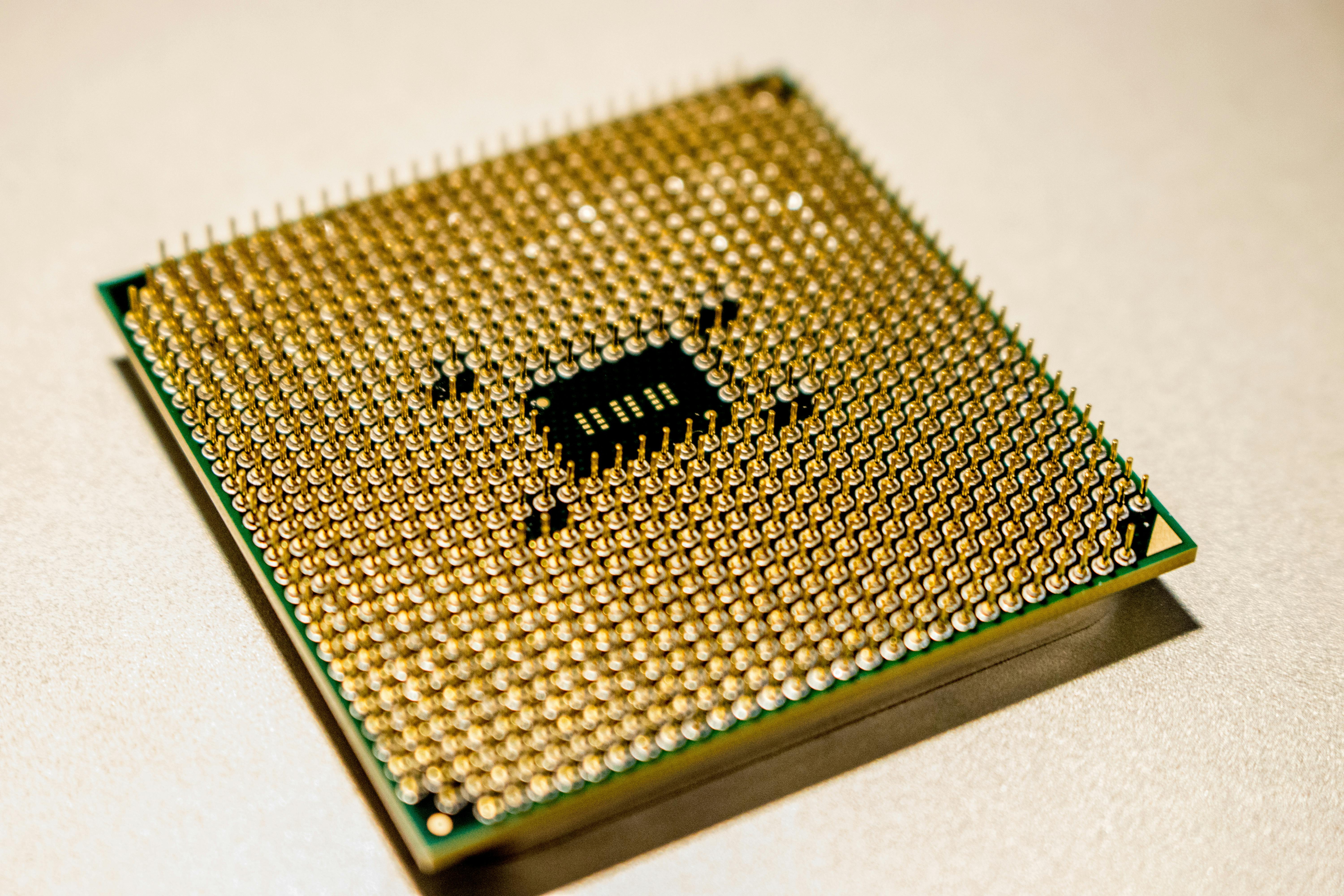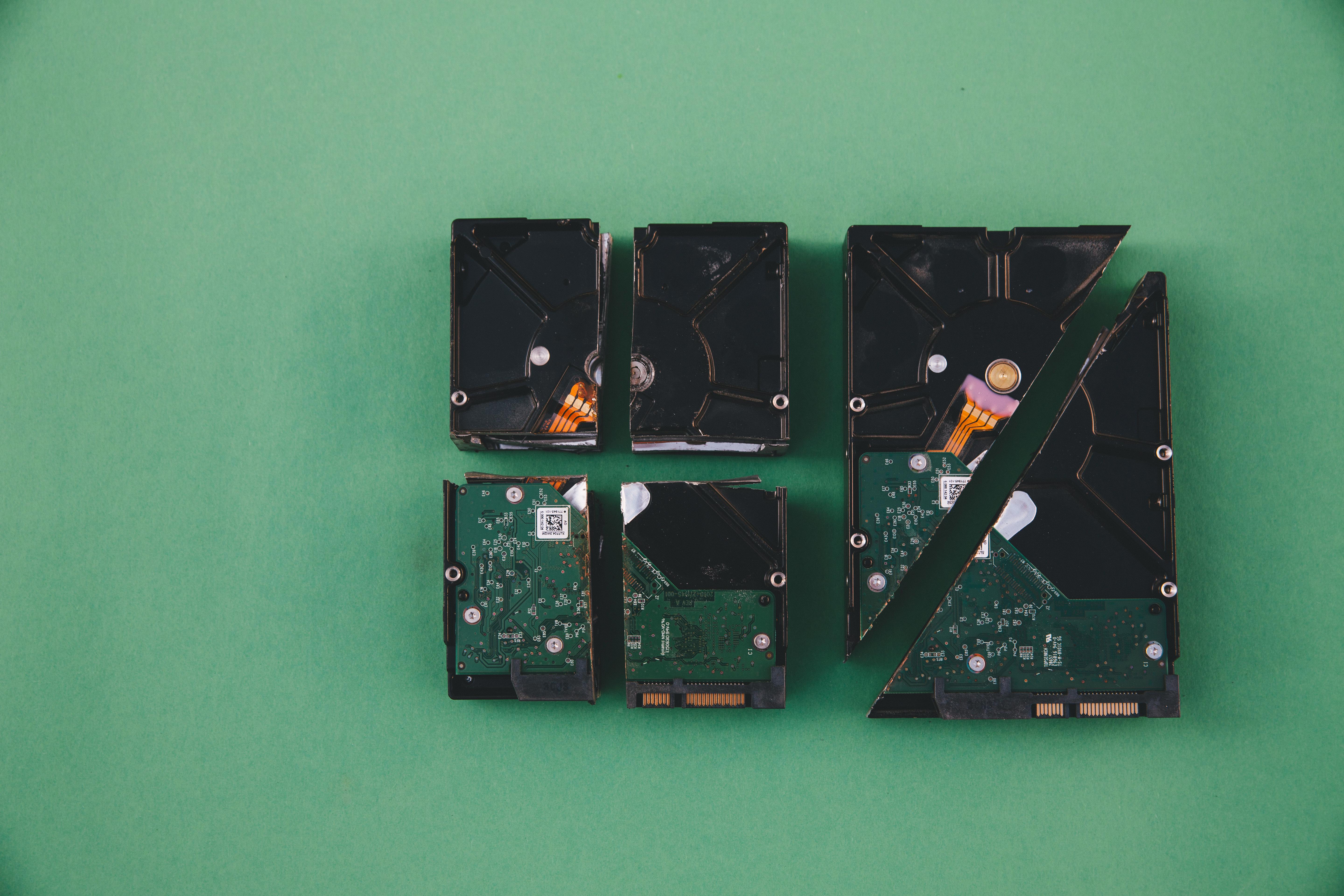Are you looking to boost your Windows 11 SSD performance? If so, then you’re in the right place! SSD overprovisioning is a powerful technique that can dramatically enhance the speed and longevity of your solid-state drive. In this article, we will guide you through the Windows 11 SSD overprovisioning setup, helping you unlock the full potential of your system. Wondering how this works? Let’s dive in!
Overprovisioning involves reserving a portion of your SSD’s storage space, which can significantly improve write performance and extend the lifespan of your drive. By setting aside this buffer space, your SSD has more room to efficiently manage data, which means faster load times and smoother multitasking on Windows 11. Plus, with the increasing demands of modern applications and games, configuring your SSD for optimal performance isn’t just a luxury — it’s a necessity!
So, how do you set up SSD overprovisioning on Windows 11? It’s easier than you might think! We’ll walk you through the necessary steps, ensuring that even if you’re not tech-savvy, you can follow along with confidence. As you optimize your SSD, you might also wonder how this impacts your overall system performance and why it’s essential in today’s digital landscape. Get ready to give your Windows 11 experience a much-needed boost! Stay tuned as we break down the process, share tips, and reveal why every Windows 11 user should consider SSD overprovisioning for improved speed and reliability.
Unlock Maximum Speed: How SSD Overprovisioning in Windows 11 Can Enhance Your System Performance by Up to 30%

Unlock Maximum Speed: How SSD Overprovisioning in Windows 11 Can Enhance Your System Performance by Up to 30%
In the fast-paced world of technology, everyone’s looking for ways to boost their computer speed. One of the most effective methods is SSD overprovisioning, especially for users of Windows 11. This technique can offer up to a 30% performance increase, and who wouldn’t want that? So, how does it work, and how do you set it up? Let’s dive into the nitty-gritty of Windows 11 SSD overprovisioning setup.
What is SSD Overprovisioning?
SSD overprovisioning involves allocating extra space on your solid-state drive (SSD) that is not accessible for general storage purposes. This spare area allows the SSD’s firmware to better manage data, which can lead to improved performance and lifespan. The extra space helps in several ways:
- Improved Write Performance: With extra space, the SSD can spread out write and erase cycles, reducing wear on individual memory cells.
- Increased Endurance: More spare area means that the SSD doesn’t fill up as quickly, thereby enhancing its longevity.
- Faster Garbage Collection: The SSD can perform maintenance tasks like garbage collection more efficiently when it has extra space to work with.
Why Windows 11 Users Should Care
Windows 11 is designed to take advantage of modern hardware, and SSDs are a big part of that equation. Overprovisioning can help users get the most out of their hardware. If you frequently run heavy applications or games, you likely notice the difference in speed.
The operating system itself, along with background tasks, uses a lot of resources. This makes SSD overprovisioning even more crucial for maintaining performance over time. Here are some benefits specific to Windows 11 users:
- Faster Boot Times: With overprovisioning, the boot process can be much quicker.
- Reduced Lag: Applications load faster and run smoother.
- Better Multi-tasking: You can juggle more applications without experiencing a slowdown.
How to Set Up SSD Overprovisioning in Windows 11
Setting up SSD overprovisioning is not as complicated as it might sound. Follow these steps to get started:
-
Identify Your SSD: Make sure you know the make and model of your SSD. You can find this in the Device Manager under Disk Drives.
-
Check Available Space: Use the Disk Management tool to see how much space you have on your SSD. You’ll want to leave around 10-20% of the total capacity free for overprovisioning.
-
Partition Your SSD:
- Right-click on your SSD in Disk Management.
- Select “Shrink Volume” and allocate the desired amount of space for overprovisioning.
-
Create an Unallocated Space: Don’t format this space; leave it unallocated. The SSD firmware will use this space for overprovisioning.
-
Monitor Performance: Use tools like CrystalDiskMark or AS SSD Benchmark to check improvements in performance.
Key Points to Remember
- Overprovisioning can lead to significant performance enhancements, especially in Windows 11.
- A good rule of thumb is to allocate 10-20% of your SSD’s total capacity for this purpose.
- Always keep your SSD firmware updated to ensure optimal performance.
This simple process can greatly improve your system’s efficiency and speed, making your Windows 11 experience even better. By taking a few minutes to set up SSD overprovisioning, you could see noticeable gains in your system performance. Don’t wait – boost your performance today!
Step-by-Step Guide: Setting Up SSD Overprovisioning in Windows 11 for Unmatched Reliability and Speed

Setting up SSD overprovisioning in Windows 11 can seem tricky at first, but it’s really not. Overprovisioning, which is the practice of reserving a portion of your SSD’s storage space, can significantly boost its performance and reliability. This guide will help users in New York and beyond to optimize their SSDs. By following this step-by-step guide, you can achieve unmatched speed and longevity from your drives. So, let’s dive right in!
What is SSD Overprovisioning?
SSD overprovisioning is when you allocate extra space on your solid-state drive that the operating system doesn’t see. This space is used for managing write operations more efficiently, which can lead to better performance and increased lifespan of the SSD. Unlike traditional hard drives, SSDs benefit from this extra space because it helps with wear leveling, garbage collection, and maintaining speed when the drive is near full.
Why Should You Overprovision Your SSD?
-
Improved Performance: With overprovisioning, your SSD can handle more write and erase cycles efficiently, which improves read and write speeds.
-
Enhanced Longevity: Reserving space reduces the strain on the drive, extending its lifespan.
-
Better Reliability: More free space allows the SSD’s firmware to manage data better, leading to fewer errors and a more stable performance.
Step-by-Step Guide to Setting Up SSD Overprovisioning in Windows 11
-
Backup Your Data: Before making any changes, always back up important data. You never know what might happen when you mess with disk partitions.
-
Open Disk Management: Press
Windows + X, then select “Disk Management.” This will show you all installed drives on your computer. -
Locate Your SSD: Find your SSD in the list. You will see all partitions and free space available.
-
Shrink Volume: Right-click on your SSD’s main partition and select “Shrink Volume.” It will take a moment to calculate how much space can be shrunk.
-
Decide How Much Space to Reserve: The amount of overprovisioning depends on your total drive size. A common recommendation is to reserve about 10-20% of the total space. For example, if you have a 500GB SSD, consider reserving 50GB to 100GB.
-
Create Unallocated Space: After deciding, enter the amount you want to shrink. Click “Shrink.” This will create unallocated space on your SSD.
-
Do Not Format the Unallocated Space: Leave the unallocated space untouched. It’s meant for overprovisioning, and formatting it will defeat the purpose.
-
Optimize Your SSD: After setting up overprovisioning, use the Windows built-in optimization tool. You can find it by searching “Defragment and Optimize Drives” in the Start menu.
-
Monitor Performance: Keep an eye on your SSD performance. You can use software tools that monitor drive health and speed.
Additional Tips for SSD Overprovisioning
-
Use SSD Manufacturer’s Tools: Some SSD manufacturers provide software that can help with overprovisioning and optimization. Check their websites for specific tools.
-
Keep Firmware Updated: Regularly updating your SSD firmware can improve performance and reliability.
-
Regularly Check Space: Monitor your SSD space usage to ensure that you maintain the overprovisioned area. If it gets too full, performance might drop.
By following these steps, you can easily set up SSD overprovisioning in Windows 11. This will help ensure that your system runs smoothly and efficiently. Overprovisioning will make a noticeable difference in speed and reliability, so don’t wait! Start boosting your SSD performance today! Take these steps, and your Windows 11 experience will never be the same.
Why Every Windows 11 User Should Consider SSD Overprovisioning: The Secret to Prolonging Drive Lifespan

Windows 11 users are always looking for ways to enhance their system’s performance and longevity. One method that often gets overlooked is SSD overprovisioning. This technique can significantly boost your drive’s lifespan while improving performance. But what is SSD overprovisioning, and why should every Windows 11 user consider it? Let’s dive into the details.
What is SSD Overprovisioning?
SSD overprovisioning is when you set aside a portion of your SSD’s total capacity that is not accessible to the operating system. This reserved space is used by the drive’s firmware for tasks like garbage collection and wear leveling. By doing this, you allow the SSD to operate more efficiently, which can lead to an increase in performance and a longer lifespan of the drive.
Why Should You Consider It?
There are numerous reasons why overprovisioning can be beneficial:
-
Enhanced Performance: By reserving space, you allow the SSD to manage data more effectively which can lead to faster read and write speeds.
-
Increased Lifespan: Over time, SSDs wear out. By giving the drive extra space, you reduce the number of write cycles on the main storage area, which prolongs the life of the SSD.
-
Better Reliability: With more space for managing data, the SSD can handle tasks like TRIM and garbage collection better, leading to fewer data errors and loss.
How to Set Up SSD Overprovisioning on Windows 11
Setting up SSD overprovisioning on Windows 11 is not as complicated as it might sound. Follow these steps for an effective setup:
-
Check the Current SSD Usage:
- Open the Disk Management tool by right-clicking the Start button and selecting “Disk Management”.
- Review how much space is being used on your SSD.
-
Determine Overprovisioning Space:
- A common recommendation is to leave about 10-20% of the SSD capacity unallocated for overprovisioning. For example, if you have a 500GB SSD, you might consider reserving 50-100GB.
-
Shrink the Volume:
- Right-click the SSD in Disk Management and choose “Shrink Volume”.
- Enter the amount of space you want to shrink, which would be the space you determined for overprovisioning.
-
Allocate the Space:
- After shrinking, you’ll see unallocated space on the SSD. This is now your overprovisioned space.
-
Finalize and Optimize:
- You may want to use software tools provided by your SSD manufacturer for further optimization and to ensure your drive is set for maximum efficiency.
Important Considerations
-
Backup Your Data: Always ensure that your data is backed up before making changes to your drive.
-
Monitor Performance: After setting up overprovisioning, monitor your SSD’s performance using tools like CrystalDiskMark or the built-in Windows performance monitor.
-
Manufacturer’s Guidelines: Check your SSD manufacturer’s recommendations regarding overprovisioning, as some models may have specific requirements or suggestions.
Benefits of SSD Overprovisioning
The advantages of SSD overprovisioning are numerous. Here are some key points:
- Prolongs the lifespan of the SSD significantly.
- Improves the speed of data transfer and read/write operations.
- Reduces the risk of data corruption and loss.
- Enhances the overall reliability of your system.
As technology continues to evolve, understanding how to maintain and optimize your hardware becomes crucial. SSD overprovisioning is one of those key strategies that every Windows 11 user should consider. It’s simple, effective, and can make a big difference in how your system performs over time. So, take action today and boost your SSD’s performance while ensuring its longevity!
Top 5 Benefits of SSD Overprovisioning in Windows 11: Boost Performance and Storage Efficiency Today!

The world of storage technology has advanced tremendously, especially with the rise of Solid State Drives (SSDs). Windows 11 users looking to optimize their storage and performance should consider SSD overprovisioning. This technique can enhance the lifespan of your SSD, increase its efficiency, and ultimately provide a smoother user experience. Here, we’ll dive into the top 5 benefits of SSD overprovisioning in Windows 11 and how to set it up.
1. Enhanced Performance
One of the most significant advantages of SSD overprovisioning is the boost in performance. When you overprovision an SSD, you reserve a portion of the drive that the operating system does not use. This free space allows the drive to manage data more effectively, leading to faster read and write speeds. In practice, users can notice quicker boot times and faster application launches. This means less waiting and more doing.
2. Improved Endurance
SSDs have a limited number of write cycles, which means their lifespan can be affected by heavy usage. Overprovisioning can help to extend the lifespan by spreading the write and erase cycles across a larger area of the SSD. By reserving extra space, you reduce the amount of data written to the same cells repeatedly, which can lead to less wear and tear. It’s like giving your SSD a little extra breathing room.
3. Better Garbage Collection
Garbage collection is a process where the SSD cleans up unused data blocks, making space available for new data. SSD overprovisioning can enhance this process significantly. With more free space available, the garbage collection routines can operate more efficiently. This can lead to fewer performance dips during heavy usage, which is especially important for gamers or professionals using resource-intensive applications.
4. Increased Storage Efficiency
With overprovisioning, the SSD can utilize its storage more efficiently. When the drive is almost full, performance can degrade. By keeping some of the capacity free, users can maintain optimal performance levels. Imagine having a busy restaurant where tables are always full — it’s hard to serve customers quickly. But with some tables reserved, service improves. This is the same concept applied to SSDs.
5. Simplified Firmware Updates
Firmware updates are essential for maintaining the performance and security of SSDs. When there’s extra space available due to overprovisioning, the update process can be more straightforward. The drive can use the reserved space to perform updates without the need to delete or relocate existing data. It’s like having a spare room for storage during a remodel; it makes the process smoother.
Setting Up SSD Overprovisioning in Windows 11
Now that you know the benefits, let’s talk about how to set up SSD overprovisioning in Windows 11. The process is simple. Here’s a quick guide:
-
Check Available Space: Open File Explorer, right-click on your SSD, and select Properties to see how much space you have left.
-
Determine Overprovisioning Size: A good rule of thumb is to allocate about 10-20% of your total SSD capacity for overprovisioning.
-
Use Disk Management: Press
Windows + Xand select Disk Management. Here, you can shrink your volume to create unallocated space for overprovisioning. -
Format Unallocated Space: Right-click on the unallocated space, and create a new volume without assigning it a drive letter. This space will then be used for overprovisioning.
-
Monitor Performance: After the setup, keep an eye on your SSD performance using tools like CrystalDiskMark to see the improvements.
Implementing SSD overprovisioning in Windows 11 can vastly improve your system’s performance and efficiency. It’s a simple step that can lead to significant benefits, ensuring your SSD remains reliable and high-performing for years to come. With these techniques, you can take full advantage of your SSD technology and enjoy a smoother computing experience.
Is SSD Overprovisioning Worth It? Discover the Impact on Your Windows 11 Performance and Storage Solutions

Is SSD Overprovisioning Worth It? Discover the Impact on Your Windows 11 Performance and Storage Solutions
When it comes to optimizing your Windows 11 experience, SSD overprovisioning is a topic that has sparked much debate. Many users wonder, “Is SSD overprovisioning worth it?” If you’re looking for ways to boost performance and improve storage solutions, understanding this concept is crucial.
What is SSD Overprovisioning?
SSD overprovisioning involves setting aside a portion of your SSD’s total storage capacity, which is not accessible for regular data storage. This space is used by the SSD controller to manage read and write operations more efficiently. Here’s a simple breakdown of how it works:
- Improved Performance: By providing additional space, the SSD can maintain its speed over time. It helps in managing write amplification, which is when the SSD writes more data than it actually needs to.
- Increased Lifespan: More overprovisioned space can result in less wear and tear on the SSD, prolonging its life.
- Better Garbage Collection: The SSD can perform background processes more effectively when it has extra space to work with.
Historical Context
In the earlier days of SSD technology, users often faced significant performance drops as the drive filled up. This was due to the way NAND flash memory works. When SSDs become close to full, they can slow down dramatically because they have to do more work managing existing data. Overprovisioning was introduced as a solution to this problem.
How to Set Up SSD Overprovisioning on Windows 11
Setting up SSD overprovisioning might seem daunting, but it’s quite simple. Follow these steps to boost performance today!
- Determine Your SSD Size: Check how much space you have on your current SSD.
- Decide on the Overprovisioning Size: A good rule of thumb is to reserve about 10-20% of your total SSD capacity for overprovisioning.
- Use Disk Management Tools: You can use Windows’ built-in tools or third-party software to create an unallocated space on your SSD.
- Format the Unallocated Space: Don’t format it for use; just leave it unallocated.
Benefits of SSD Overprovisioning
The benefits of SSD overprovisioning can be significant, especially for users who rely on their PCs for demanding tasks. Here are some advantages:
- Faster Boot Times: More unallocated space can lead to quicker system boot times.
- Enhanced Multitasking: With better management of data, you’ll notice less lag when running multiple applications.
- Smoother Gaming Experience: Gamers can experience less stutter and faster load times, which can be crucial during gameplay.
Considerations Before Overprovisioning
While SSD overprovisioning has its perks, it’s not for everyone. Here are some factors to consider:
- Storage Needs: If you’re running low on space, reserving part of your SSD might not be practical.
- Type of Usage: For casual users who mostly browse the web, the benefits may not be as noticeable.
- Cost of SSDs: With SSD prices dropping, it might be more cost-effective to upgrade to a larger SSD rather than overprovisioning.
Final Thoughts
So, is SSD overprovisioning worth it? For many users, especially those using Windows 11 for resource-intensive tasks, it definitely can be. It’s a way to keep your SSD performing at its best, ensuring longevity and efficiency. If you’re looking to enhance your system’s performance, consider giving SSD overprovisioning a try. You might just find it makes a significant difference in how your computer operates.
Conclusion
In conclusion, setting up SSD overprovisioning in Windows 11 is a vital step to enhance the performance and longevity of your storage drive. By allocating a portion of your SSD’s capacity for overprovisioning, you can significantly improve write speeds, reduce wear and tear, and optimize garbage collection processes. Throughout this article, we explored the benefits of overprovisioning, the recommended percentage of space to reserve, and the tools available for implementation. As SSD technology continues to evolve, taking proactive measures will ensure that your system runs smoothly and efficiently. We encourage you to assess your current SSD setup and consider implementing these strategies to maximize your storage capabilities. Don’t wait—take control of your SSD’s performance today, and enjoy a faster, more reliable computing experience in Windows 11.

